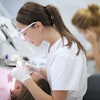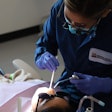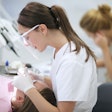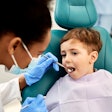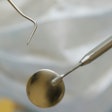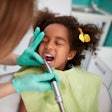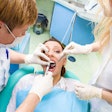In discussions of workforce issues and the media, New Zealand has been touted as an example that dental therapists can help improve the oral health of underserved populations in the U.S.
The latest example is a brief published in March by the Pew Children's Dental Campaign, "Dental Therapists in New Zealand: What the Evidence Shows." But that report contains an error that undermines Pew's overall premise, according to the ADA: New Zealand and the U.S. have identical levels of untreated tooth decay in school-age children.
The Pew report purports to demonstrate that the use of therapists in New Zealand has resulted in dramatically better oral health outcomes among children than in children in the U.S., the ADA noted in a press release: "Among 5- to 11-year-olds, the treatment disparity is the most dramatic. In New Zealand, 3% of children in this age range have untreated tooth decay, compared with 20% of U.S. kids."
The brief's authors derived the statistic of 20% untreated decay among U.S. children from a 2012 report by the U.S. Centers for Disease Control and Prevention (CDC). Their error was in assuming that the 20% figure represented permanent teeth only (originally reported by the CDC in May 2012; corrected in June), when in fact the CDC reports the statistic is for both primary and permanent teeth.
While New Zealand's rate of 3% may be accurate for permanent teeth, the report referenced by Pew (2009 New Zealand Oral Health Survey) notes that 17% of baby teeth in New Zealand's 5- to 11-year-olds have untreated decay. That adds up to a total of 20%.
The ADA has confirmed its reading of the data with the CDC, the association noted.
"Ultimately, a 20% rate of untreated decay in children is unacceptable in any country," said ADA President Dr. Robert Faiella. "We are committed to changing this, as we know Pew is. Unfortunately, debates about dental midlevel providers have threatened to drown out discussions of how to extend known, proven solutions to greater numbers of Americans who lack access to dental care, many of them suffering with untreated disease."
AGD President Jeffrey M. Cole, DDS, MBA, FAGD, agreed.
“The fact that the percentage of children suffering from untreated dental decay is almost identical in both countries is a clear sign that a dental therapist model does not help to decrease untreated dental decay in children,” Dr. Cole stated in a press release.
On May 7, Pew posted a statement on its website, noting that it had been made aware of an unpublicized revision to a report by the CDC that was used in the analysis and preparation of the "Dental Therapists in New Zealand" issue brief.
"Specifically, two charts included in the CDC's original May 2012 report, 'Selected Oral Health Indicators in the United States, 2005-2008,' appear to have been mislabeled, one referring to the rate of untreated tooth decay in permanent teeth and one referring to the rate of tooth decay in permanent teeth among children of varying income levels," Pew wrote.
Pew is now working with the CDC to gain a fuller understanding of the unpublicized revision that was apparently made last summer and how it impacts the findings of the report.
"We support states in seeking a variety of evidence-based solutions," Shelly Gehshan, director of the Pew children's dental campaign, stated. "And the debate about increasing access to dental care, including the idea of expanding the dental team with midlevel providers, should be a fact-based dialogue. That's why I appreciate the ADA bringing a data discrepancy in our 'Dental Therapists in New Zealand' brief to our attention. Pew takes accuracy and data analysis seriously, and we plan to fully evaluate the revised data from the U.S. Centers for Disease Control and Prevention."



